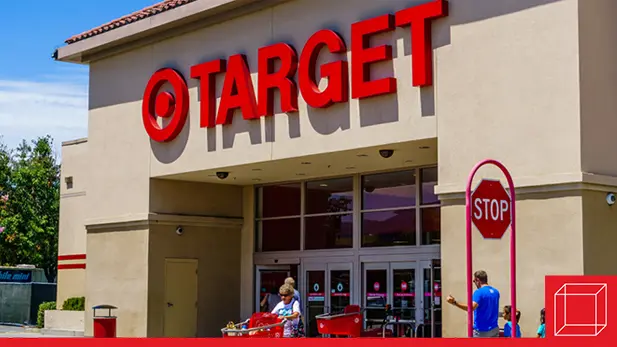How Brands Are Winning Over Gen Z Consumers
Gen Z, born between 1997 and 2012, is reshaping consumer expectations. Unlike previous generations, Gen Zers expect brands to be authentic, socially conscious, and digitally fluent.

Traditional marketing models, like the linear purchase funnel, are seemingly less relevant to this audience, who bounce back-and-forth between brand discovery, evaluation, and loyalty based on community validation and real-time digital engagement. Understanding how brands are resonating with Gen Z is crucial for companies hoping to maintain relevance in a rapidly evolving marketplace.
Top Brands Capturing Gen Z's Attention
According to Ad Age and a Harris Poll survey, Amazon holds the top spot for brand momentum among Gen Z consumers, followed closely by Costco, Target, and a range of digital-first brands like TikTok, DoorDash, and Uber Eats. Newer technology companies like ChatGPT also ranked highly, demonstrating how quickly emerging platforms can gain trust and cultural significance with younger audiences.
Beyond the top-ranked brands in surveys, smaller but culturally relevant brands such as Rhode skincare and Poppi soda are capturing Gen Z’s attention through experiential marketing and social media amplification. Rhode, founded by Hailey Bieber, created major buzz with its pop-up in New York City, drawing long lines of beauty fans eager to shop exclusive products and share their experience on TikTok and Instagram. Similarly, Poppi’s "Poppi World" pop-up activation turned the launch of its Cherry Cola flavor into a viral moment, leveraging influencers and celebrities to flood social media feeds during New York Fashion Week. This strategy reflects a broader shift, as brands like Cetaphil and Vuori increasingly focus on blending in-person activations with influencer content to build community and drive awareness.
Interestingly, some legacy brands such as Coca-Cola, McDonald’s, and Nike are also maintaining strong momentum by adapting their marketing strategies to meet Gen Z expectations, blending nostalgic appeal with modern values. The wide range of the top brands performing well with younger audiences shows that both digital-native companies and legacy corporations can succeed with Gen Z.
A New Approach to Brand Engagement
The linear purchase funnel is a traditional model that describes how consumers move step-by-step toward making a purchase. It consists of four main stages: awareness, interest, desire, and action. First, consumers become aware of a brand or product. Next, they develop interest, wanting to learn more about it. If the brand successfully builds appeal, that interest turns into desire. Finally, the consumer takes action by making a purchase. This funnel assumes a predictable, sequential journey from discovery to buying, with the brand guiding consumers through each step in a controlled way. For Gen Z where social media has become their primary marketplace, the purchase journey is less linear, as discovery, evaluation, and loyalty often happen simultaneously through social media, peer influence, and real-time digital engagement.
Traditional notions of brand building are giving way to more fluid, community-driven models. As Vogue Business notes, Gen Z consumers prioritize community endorsement over brand messaging, and their path from discovery to purchase rarely follows a linear route. Social media platforms like YouTube, TikTok, and Instagram play a major role, offering a continuous flow of peer recommendations, influencer content, and brand interactions that blend entertainment with marketing.
Rather than controlling the narrative, brands must now participate in conversations and offer genuine value in ways that feel personal and culturally relevant. This marks a significant departure from older models, where brands primarily pushed messages through mass advertising channels.
Brands that succeed with Gen Z often share a few common traits: they are digitally fluent, socially conscious, and transparent. Global management consulting firm McKinsey & Company describes Gen Z as value-driven and highly pragmatic, seeking brands that offer both quality and meaning. Companies such as Nike and CeraVe have successfully tapped into these preferences.
AI-powered brands like ChatGPT and productivity tools like Grammarly reveal another dimension of Gen Z’s preferences: a strong affinity for technology that enhances self-expression, learning, and personal growth. Gen Z does not view AI as a novelty but as an integral part of their daily lives.
Lessons for Brands Moving Forward
The path to Gen Z’s loyalty requires more than product quality, it demands cultural resonance. Brands must be quick on their feet, willing to evolve their messaging, and capable of building genuine relationships with consumers. They must understand that for Gen Z, brand loyalty is not a given, it is earned through ongoing authenticity, innovation, and shared values. In the coming years, companies that listen to Gen Z, embrace new technologies, and contribute meaningfully to societal conversations are likely to lead the next wave of brand success.
In the Classroom
This article can be used to discuss target markets (Chapter 11: Customer-Driven Marketing).
Discussion Questions
- What key differences separate Gen Z consumers from previous generations in terms of brand engagement?
- Why are both digital-first and legacy brands able to succeed with Gen Z?
- How has the traditional marketing funnel become less relevant when targeting Gen Z consumers?
This article was developed with the support of Kelsey Reddick for and under the direction of O.C. Ferrell, Linda Ferrell, and Geoff Hirt.
Bradley Johnson, "25 Brands Gen Z Says Are Rising," Ad Age, April 25, 2025, https://adage.com/article/datacenter/25-brands-gen-z-says-are-rising-amazon-chatgpt-costco/2602556/
"Gen Z Broke the Marketing Funnel," Vogue Business, February 22, 2024, https://www.voguebusiness.com/story/consumers/gen-z-broke-the-marketing-funnel
Kanika Talwar, "DCX’s Top 25 Gen Z Brands," WWD, April 24, 2025, https://wwd.com/business-news/business-features/dcdx-top-25-gen-z-brands-1236718348/
Tracy Francis and Fernanda Hoefel, "True Gen: Generation Z and Its Implications for Companies," McKinsey & Company, November 2018, https://www.mckinsey.com/industries/consumer-packaged-goods/our-insights/true-gen-generation-z-and-its-implications-for-companies



